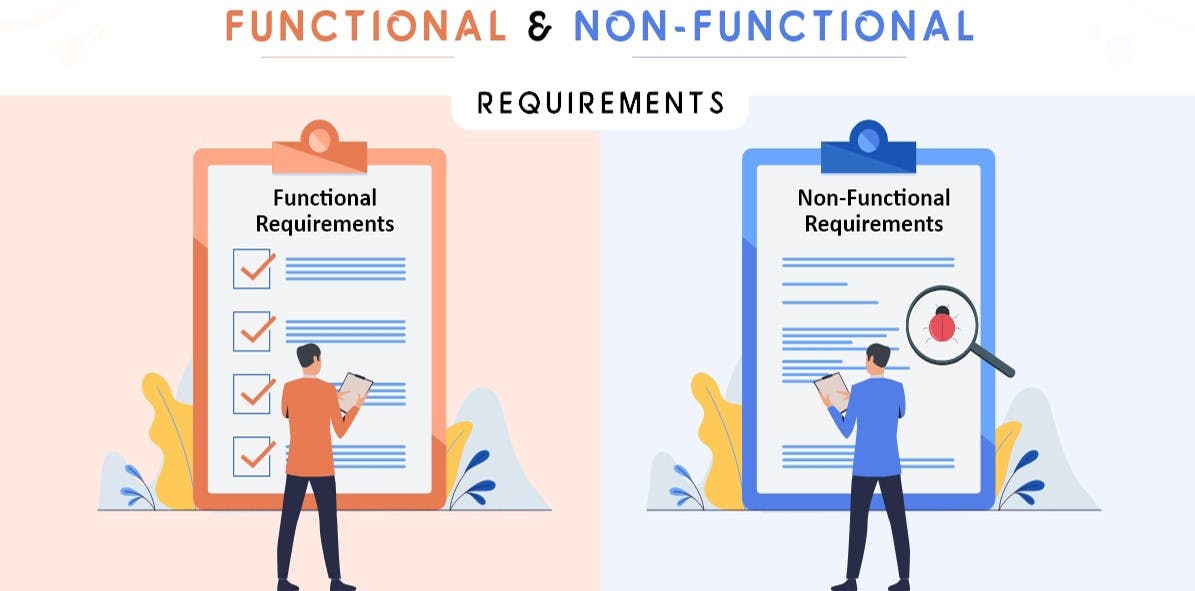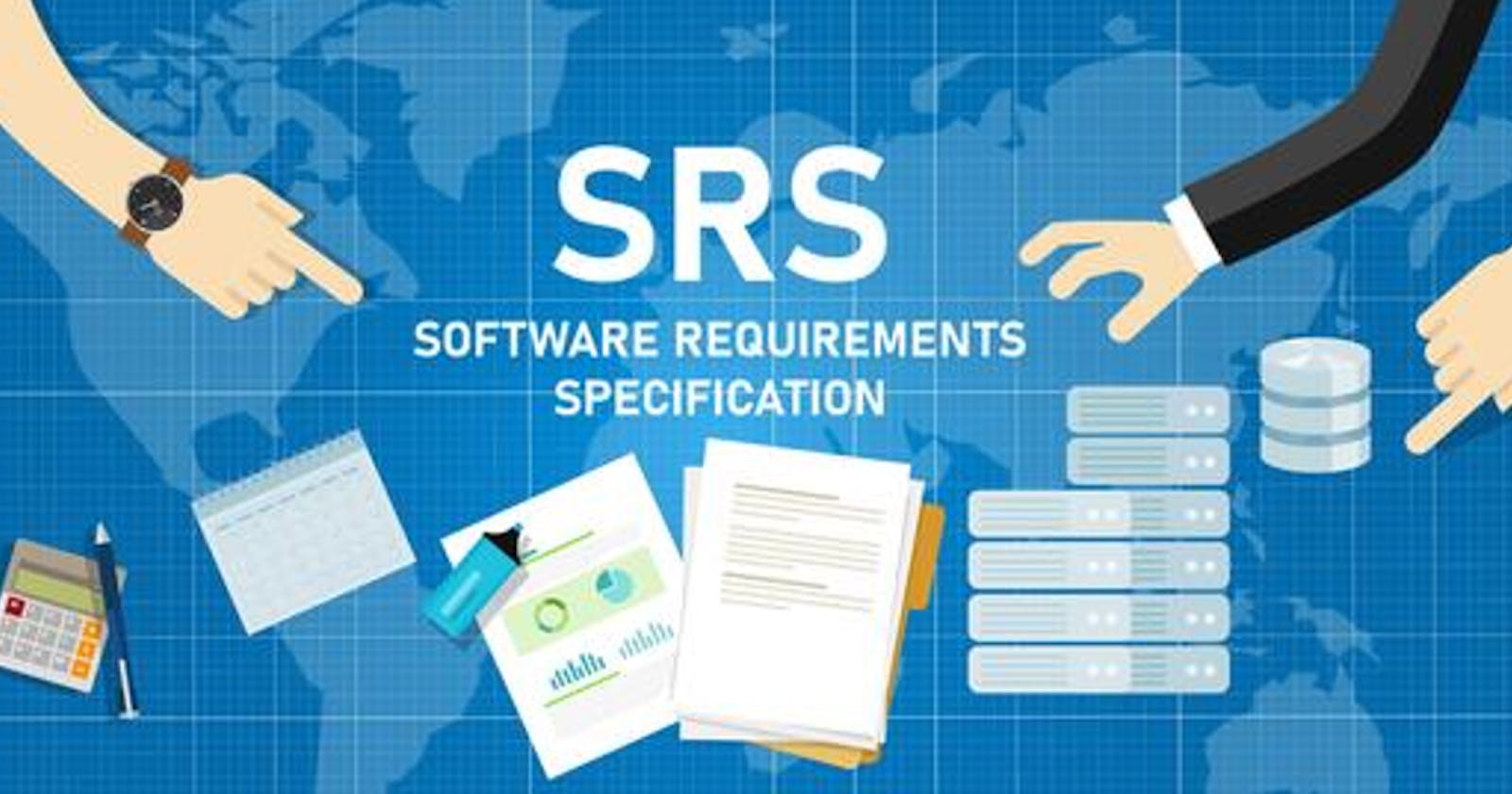Table of contents
One of the most important documents in software development is the Software Requirements Specification, or SRS document. It serves as a medium to bridge communication and specifies the user needs in a manner that both the user and the developer of the product will understand and be satisfied. It allows both users and developer understands their needs by providing clarity thereby minimizes the time and effort required by developers to achieve desired goals and also curtail the development cost.
What is a Software Requirements Specification?
A software requirements specification document is a large document written in natural language containing a description of what a system will do and not how it will do it (technical implementation). They form the foundation for understanding what the development organization and customer anticipate the software product to do.
A software requirements specification (SRS) is a comprehensive description of the intended purpose and environment for software under development. The SRS fully describes what the software will do and how it will be expected to perform. 🡥
Importance of Software Requirements Specification
Software Requirements Specification form the basis of software development project. At the initial stages, the client and users are given a quick overview of the software, the intents, goals, and anticipated outcomes are all clearly stated thereby lays the outline for software design. By defining the expected outcomes, the developers' work is made easier in terms of time and expense. It serves as the cornerstone of the contract between the customer and the developer. As the solution is transferred and used elsewhere, or as the foundation for new clients, it becomes simpler.
Types of Requirements
Software Requirements can be classified into two types namely:

Functional Requirements
Functional Requirements are also known as product features, they are used to describe what the software has to do. These are the specifications that the system must meet in order to satisfy the end user's basic needs. As a requirement of the contract, all of these functionalities must be built into the system. Examples of the functional requirements are - Authentication of a user on trying to log in to the system.
Non-functional Requirements
Non-functional Requirements are also known as non-behavioral requirements, they are mostly quality requirement which stimulate how well the software does. Depending on the project, these criteria may be prioritized differently or applied to a different degree. Examples of the non-functional requirements are - The background color of the screens should be light blue.
Sometimes, software requirement are also classified by known requirements, unknown requirements, and undreamed requirements.
Characteristics of a Good Software Requirements Specification
The following are the features to determine the quality of a good software requirements specification document. A software requirements specification document should be:
Correct: A software requirements specification document should precisely represent the functioning and specifications of the product. It should depicts exactly the expected outcome of the product.
Complete: A software requirements specification document should include all the functionality a client has requested.
Consistent: A software requirements specification document must follow same abbreviation and conventions throughout the document.
Traceable: A software requirements specification document makes it simple to refer to each requirement in subsequent development and if the origin of each of its requirements is obvious.
Modifiable: A software requirements specification document must methodically and distinctly identify each and every requirement. If anything changes, the dependent requirements and the specific requirements can be adjusted without affecting the others.
Ranked for importance and/ or scalability: A software requirements specification document must have importance attached to every requirement either the importance or stability of that particular requirement. It'll help in deciding the requirement that should be fulfilled before the other in the weight of importance attributed to the requirements.
Verifiable: A software requirements specification document is verifiable if there is a way to quantify the degree to which the finished software satisfies that conditions.
Unambiguous: A software requirements specification document should not be any confusion regarding interpretation of the requirements. They should be clear and concise.
Structure of a Good Software Requirements Specification
The following is a simple SRS document template:
Table of Contents
Introduction
1.1 Purpose of this document
1.2 Scope of this document
1.3 Overview
The Overall Description
2.1 Product Perspective
2.1.1 System Interfaces
2.1.2 Interfaces
2.1.3 Hardware Interfaces
2.1.4 Software Interfaces
2.1.5 Communication Interfaces
2.1.6 Memory Constraint
2.1.7 Operations
2.1.8 Site Adaptation Requirements
2.2 Products Functions
2.3 User Characteristics
2.4 Constraints
2.5 Assumptions for dependencies
2.6 Apportioning of requirements
Specific Requirements
3.1 External Interfaces
3.2 Functions
3.3 Performance requirements
3.4 Logical database requirements
3.5 Design Constraints
3.6 Software system attributes
3.7 Organization of specific requirements
3.8 Additional comment
Other Requirement/ Information
4.1 Appendices
4.2 Definitions, Acronyms, Abbreviations
4.3 References
Conclusion
A software requirements specification document is an important document that provides a clear understanding of what is expected from a software product. It is therefore required to be written from the initial stages of the agreement since it sets out the framework that all the development teams will follow until the final verification and cross-checking of the end product is done.
For more information and tips on writing a good software requirements specification document
software requirements specification (SRS) by Linda Rosencrance
Why should you have a good Software requirement specification
Software requirements specification. Gather software requirements.
HOW TO WRITE AN SRS DOCUMENT, OR SOFTWARE REQUIREMENTS SPECIFICATION by Max Titov
How to Write a Software Requirements Specification (SRS Document)
